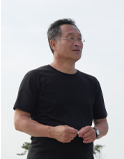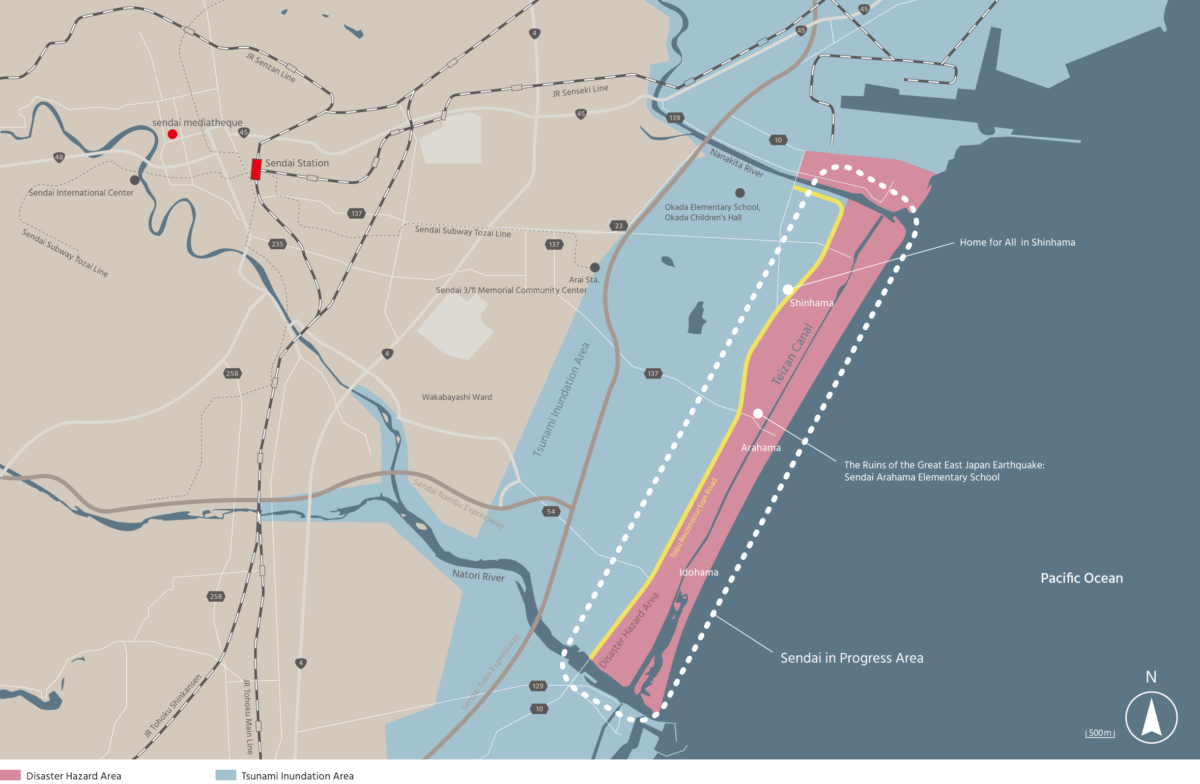About
Sendai in Progress, an ongoing art project that began in 2017, takes place in several of Sendai City’s coastal districts severely that the Great East Japan Earthquake and resulting tsunami greatly affected.
Today, a 7-meter-tall humanmade embankment lines this coastline. The strip of land is roughly 200 meters from the coast; it remains largely uninhabited and is filled with vacant lots. However, there are still a few residents who continue to live on their land there. This project was initiated through exchange with these people.
Sendai in Progress focuses on the present-day task of building up a new community in this area both now and into the future, as opposed to focusing on the records and memories of the damage the Great East Japan Earthquake and tsunami caused. The project proposes and implements various activities that promote the connection and revitalization of the pre-existing community through the daily lives of the people who continue to live there.
For example, in a place where a bridge had been washed away by the tsunami, a new one was conceived and constructed. Several benches were also installed on the street side after seeing former residents visiting the town and standing around talking with people they knew. Even if the houses and landmarks are gone, the community of neighbors who used to be there can be regained in some way.
I feel that we must accept the reality of what we currently have and take action in the now to move forward and beyond the present.
Going forward, I want to continue my commitment to this community.
KAWAMATA Tadashi
What is Sendai in Progress?
Based in France and active in the international arena, artist KAWAMATA Tadashi is known for his large-scale installations created using wood and scrap materials, together with art projects that emphasize the aspect of process; these he terms “work in progress.” These projects are distinctive for always engaging local residents and local society during the project, and for bringing local issues and resources to light.
The coastal area of Sendai was severely damaged by the Great East Japan Earthquake, which struck on March 11th, 2011. While on a research trip to Sendai in July 2016, Kawamata discovered from people living in the Shinhama area in Okada in the city’s Miyagino Ward that they were unable to cross the Teizan Canal because the bridge that once stood there had been washed away by the tsunami. This led to Kawamata’s conception of a work that functions as a bridge–Bridge for All–which gave birth to this project, Sendai in Progress.
The state of affairs in Sendai’s coastal suburbs is changing moment by moment. Sendai in Progress primarily works with three areas adjacent to the Teizan Canal, which runs along the Sendai coast: the Shinhama, Okada area in Miyagino Ward, and the Arahama and Ido areas of Wakabayashi Ward. The various large- and small-scale activities that are a part of Sendai In Progress are gradually deepening the project’s relationship with the community.

What is sendai mediatheque?
sendai mediatheque is a public facility in the city of Sendai. Functioning as a library, event space, and gallery, it is a base for art- and video-related cultural activities. sendai mediatheque also supports community members in developing proficiency in different kinds of media with the aim of enabling all people to be able to exchange information freely in such a manner.
As of 2023, sendai mediatheque’s role has expanded in scope beyond the facility itself. Based on one of its philosophies, which is to “act as a node rather than a terminal,” sendai mediatheque is developing regionally-based projects. These include collaborations with a range of external organizations, supporting the dissemination and utilization of information by civic groups, and the running of a citizen’s archiving platform for the Great East Japan Earthquake of March 11th, 2011.
What is art node?
One of sendai mediatheque’s philosophies is to act as a node rather than a terminal. Taking this concept of node and re-interpreting it, the Sendai Art Node Project (abbreviated to art node) was launched in 2016.
Working under the banner of sendai mediatheque’s art node, artists create contemporary art works and different kinds of projects based on research into the city of Sendai and the Tohoku region. The sharing of the work process from research through planning, production, and presentation with other people creates contact points for their artistic activity that go beyond mere art appreciation. This involves a greater number of people in such projects and helps build a spirited art scene in Sendai. art node also facilitates a variety of opportunities to learn about, broaden one’s perspectives of, and deepen one’s ideas around art, including events such as talks and meetings.
Profile

KAWAMATA TADASHI
Born in Mikasa, Hokkaido, in 1953. Having participated in numerous large-scale international contemporary art exhibitions such as the 40th Venice Biennale in 1982 and documenta 8 in 1987, Kawamata is one of Japan’s best-known artists internationally. He has held positions as director of the Yokohama Triennale, professor in post-graduate programs at Tokyo University of the Arts, and professor at the École nationale supérieure des beaux-arts in Paris. He is currently based in Paris.
Kawamata’s practice goes beyond the existing artistic framework to actively engage with different fields such as architecture, urban planning, history, and local communities. His style of dynamically developing long-term projects has had a major impact on the art scene.
